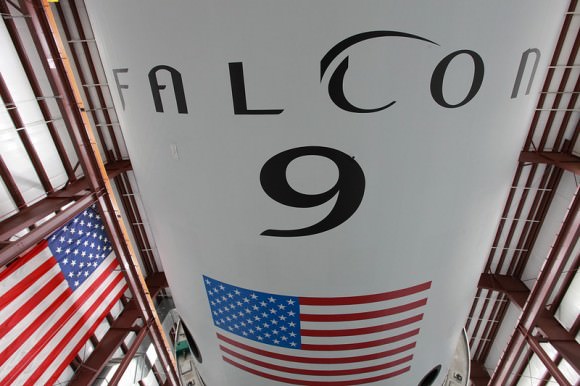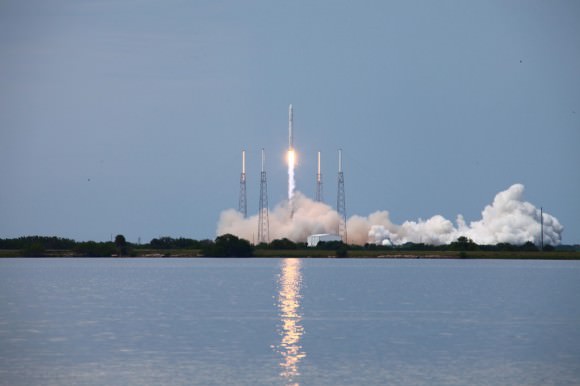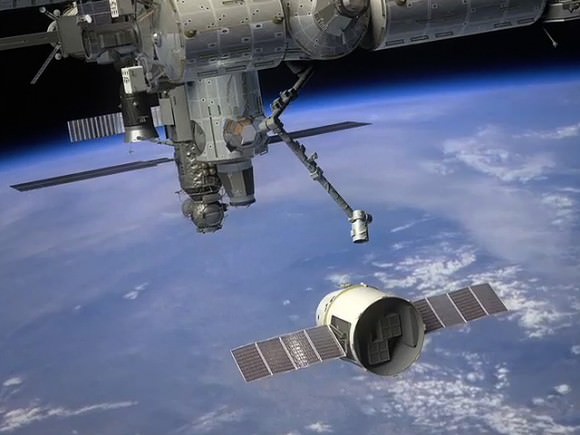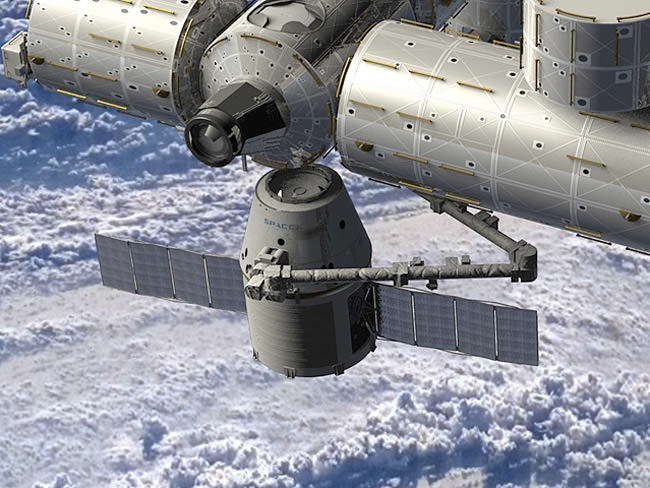[/caption]
Matters of space flight are no different than other international issues. What is said (or not said as the case may be) can suffer from being “lost in translation.” Such was the case recently when the media (this website included) reported on a Ria Novosti article that claimed that members within the Russian Space Agency had stated opposition to Space Exploration Technologies (SpaceX) docking their next Dragon spacecraft with the International Space Station.
“This was never a SpaceX issue,” said NASA Spokesman Rob Navias during a recent interview. “This was an International Space Program issue – which has final approving authority for any spacecraft set to dock with the International Space Station – be it the HTV, ATV or even Soyuz, they all have to go through the exact same process.”

Navias stated emphatically that the Russian Space Agency never stated that they would not allow SpaceX to dock with the ISS – only that they wanted to ensure that the NewSpace firm followed the same procedure required of all other participants on the station (both a Stage Readiness Review as well as a Flight Readiness Review).
“This is basically an issue of semantics, of interpretation,” Navias said. “The Russian media wrote this article and when it was translated – it appeared as if that Russia was saying something – which they simply weren’t.”

The partners involved in the International Space Station Program, the United States, Russia, the European Union, Japan and Canada all comprise a committee that determines matters concerning the orbiting laboratory. No one partner has a ‘controlling authority’ over the ISS. A good example of this is when Russia flew Dennis Tito to the ISS in 2001 – over initial U.S. objections.
If all goes according to plan SpaceX will launch the next Falcon 9 rocket with its Dragon spacecraft payload no-earlier-than Dec. 19, 2011 (although technically that launch is still on the books for Nov. 30). The Dragon, if cleared, will conduct station-keeping alongside the ISS where the station’s mobile servicing system (Canadarm 2) will grab it and then it will be docked to the ISS.
This mission could see both COTS 2 and COTS 3 mission objectives combined. Cargo from the International Space Station would then be placed into the Dragon which would return to Earth, splashing down in the Pacific Ocean, off the Coast of California.



Could this “mistranslation” by any chance be intentional?
Could this “mistranslation” by any chance be intentional?
GO Space X!
GO Space X!
The first casualty of translation is context.
Thanks for the update on this story Jason. Looking forward to this test of the Dragon.
The media rush to print controversy, I suppose? I`d like to know why SpaceX doesn`t use its laser docking system that they talked about earlier, like the European`s ATV?
Hi Gary
The “Dragon Eye” LIDAR system is for manned missions that will “dock” with the ISS. Cargo missions use the CBM and are “berthed” by the SSRMS. The Common berthing Mechanisim is large enough to allow for the standard payload racks.
The earlier reports I google up claim that the DragonEye provides range information to ISS, and will be used ‘in the final COTS’. Since COTS 2&3 are aggregated, that should mean its intended use in the upcoming mission.
And as I remember it, the ISS crews have been trained on DragonEye for the near term SpaceX ISS missions.
Jason – You state “No one partner has a ‘controlling authority’ over the ISS. A good example of this is….” etc.; but don’t tell us:
@hether the Russians violated the rules then or not. (ie, what is the exact approval process, if the biggest partner and overall systems integrator, the US, can be ignored?)
Thanks!
As a long time aerospace guy who has worked with the Russians for years… Jason seems to have a degree in “re-typing press releases” but does not examine them for completeness. How about talking to some other people about the Russians and reading up on the recent history? The Russians can be useful partners but we can’t just accept what any partner claims. The Russians have steeply raised prices when there was no reason to do so, they have a record of not telling the team about safety problems, they put their interests way ahead of others. A “journalist” would have investigated these things instead of uncritically echoing a press release.
That title is asking for it. It deliberately and maybe wickedly wants to remind one of Sofia Coppola’s nasty movie that wants to make us believe that Japan is a nation of fools and freaks, which it ain’t. Has there ever been one such nation in all of history? Sofia’s beloved Italy, maybe, because it was foolish enough to elect someone like Berlusconi as its kingly president, and Breakheart Ruby as its streetwise queen….